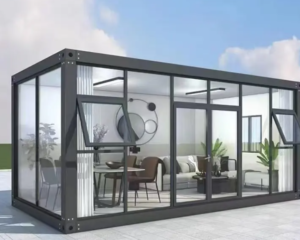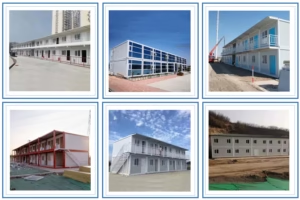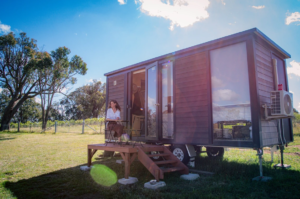These days more and more people are opting for container homes or container houses as they are also called, as these homes are easy to construct, eco friendly, and inexpensive. Whether it is a quaint tiny home, or a large modular home, the idea of transforming a container into a livable space is a remarkable idea. In this overview, you will find the important steps, good practices, and considerations to bear in mind when transforming a container into your dream home.
Why Choose a Shipping Container Home?
- Cost-Effective: Containers, specially used ones, can range from a few thousand dollars, making them a much cheaper option than traditional houses.
- Eco-Friendly: Containers help in eliminating waste by repurposing.
- Durability: Containers have the ability to withstand harsh conditions like weather and fire. They are also earthquake resistant.
- Modularity: Units can be stacked on top of one another, or combined to make larger living quarters.
- Quick Construction:Since the mainframe is already built, it saves a lot of time compared to traditional building.

Step-by-Step Guide to Building a Container House
1. Design and Planning
The first phase of container house construction revolves around self assessment. What is your budget? Do you require one room or multiple? Keep in mind plumbing, insulation and electrical systems too. Check out Pinterest or Google for ideas and set up a comprehensive floor plan.
- Tip: To avoid delays later in the process, check local building codes and regulations as soon as possible.
2. Choose the Right Container
Choose the fitment of the container first (new, used, high cube, 20ft or 40 ft). USed and new containers should be checked for rust, dents and any structural issues before purchasing.
- Tip: High cube containers are more suitable due to their extra height for insulation and alternative interior designs.
3. Prepare the Site and Foundation
Level the land, also have drainage systems installed and select an appropriate foundation type. Concrete slabs, piers and steel frames are a good option for stable containers.
- Tip: If multiple containers are being used, additional planning is needed with connections and securing being the main focus when using more than one container.
4. Structural Modifications
Windows and doors require pre-planned cut outs. Ensure that an engineer is consulted before doing so to verify the structural integrity. Rust should be treated and walls should be reinforced if needed for added support.
- Tip: For cheaper, better-tempered control some leaders prefer spray foam for insulation, especially for sensitive issues such as energy efficiency dorms.
5. Install Utilities
Strategies to install the facilities such as Electrical fitting, Plumbing, and HVAC work need to be done. Energy saving alternatives must be considered, for example, solar pane.
- Tip: Hire professionals for complex tasks like electrical work to ensure safety.
6. Interior and Exterior Finishing
Add flooring, walls, and ceilings. Use eco-friendly materials for insulation and decoration. Paint the exterior to reflect sunlight and reduce heat absorption.
- Tip: Incorporate large windows and skylights to maximize natural light.
7. Decorate and Move In
Furnish your container home with multi-functional furniture to save space. Add personal touches like artwork, plants, and lighting to create a cozy atmosphere.

Pros and Cons of Container Homes
Pros
- Affordable compared to traditional homes.
- Environmentally friendly.
- Durable and secure.
- Highly customizable and modular.
Cons
- Limited width can feel cramped.
- Requires significant insulation to combat heat and cold.
- Structural modifications can be costly.
Inspiring Examples of Container Homes
- Budget-Friendly: A DIY container home built for less than $10,000.
- Luxury Design: Stylish container homes with modern interiors and energy-efficient features.
- Modular Homes: Stacked containers creating multi-level living spaces.
Conclusion
Turning a shipping container into a house is a rewarding project that combines creativity, sustainability, and practicality. By following this guide, you can transform a simple metal box into a comfortable and stylish home. Whether you’re building a tiny house or a larger modular home, the possibilities are endless.
Start your container home journey today and join the growing community of innovative homeowners!



